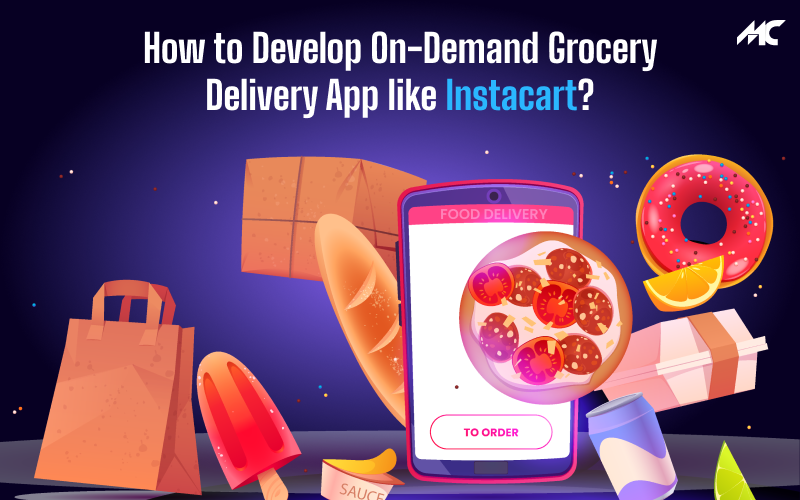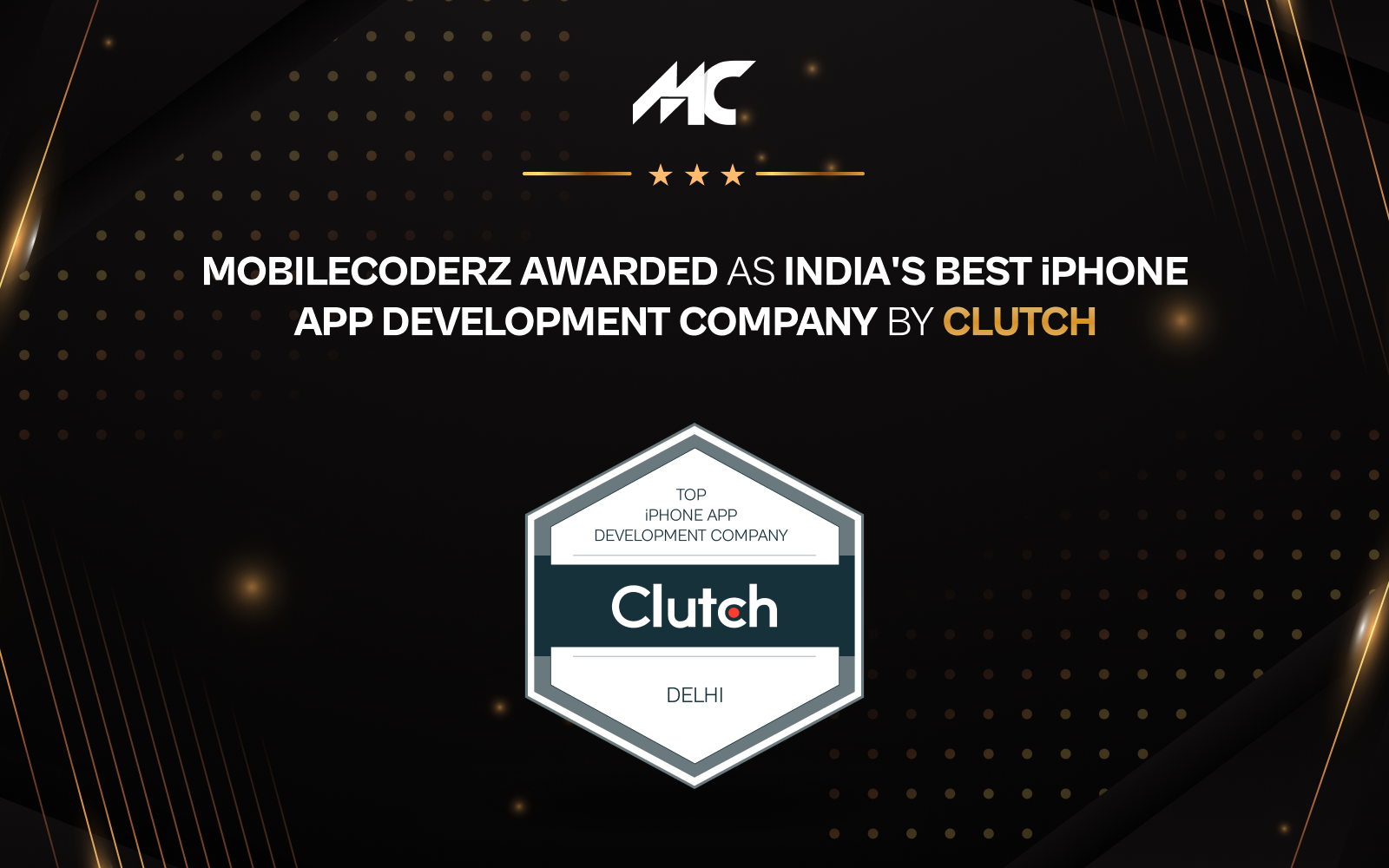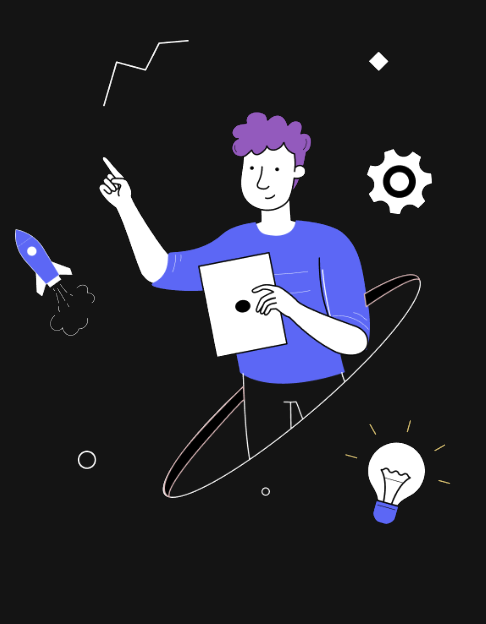How to Develop On-Demand Grocery Delivery App like Instacart?
The demand for on-demand services has increased significantly after the COVID-19 global pandemic. Lockdown norms and the risk of infection were encouraging businesses to shift toward digital transformation. Moreover, Grocery app development has also become incredibly popular due to this shift. In fact, according to a report by McKinsey, the future online grocery shopping could contribute to at least 30 percent of the market in some European countries.
Even digital grocery shopping in the US might grow by 20.2% in 2022. This data is not surprising because an on-demand grocery makes shopping incredibly easy and helps individuals to shop in a matter of minutes. In this blog, we will learn how to develop an on-demand grocery delivery app like Instacart with high-quality grocery app development.
- Learning About On-Demand Grocery Delivery App
- The Need for Developing a Grocery Delivery App
- What is Instacart?
- Best Business Models for Grocery Apps
- Key Features to Include in Grocery App Development
- Step-by-Step On-Demand Grocery Delivery App Development
- Time and Cost to Develop On-Demand Grocery Delivery App
- Conclusion
Learning About On-Demand Grocery Delivery App
On-demand grocery apps help people to order groceries right at the convenience of their doorstep. This type of service might be familiar to consumers. However, the introduction of such a service to mobile devices has made it more affordable and popular among mainstream audiences.
Grocery app development is similar to the development process of other on-demand apps. In fact, there are two components of a delivery service; an app for the customers demanding the service and a separate app for the service providers making the deliveries.
The Need for Developing a Grocery Delivery App
The market of grocery delivery apps might be already full of various players. However, the size and possibilities of the industry always provide excellent opportunities for new players. For this reason, consider taking assistance from a leading grocery app development company.
Here’s why you should invest in developing an on-demand grocery app;
- The online grocery market sales might grow from $113 billion to $187 billion in the US by 2024. However, the current service might not be able to meet the high volume in the future, and people may start searching for alternatives. It provides the right opportunity to invest in on-demand grocery delivery app development.
- The COVID-19 global pandemic is also a significant contributor to this massive growth of on-demand grocery delivery apps. People have been compelled to due order all important stuff online from these groceries apps. Thus, even after relaxation in the lockdown norms, around 49% of customers still prefer buying online.
- Grocery apps provide the best opportunity to supermarkets to scale up their services and improve their sales.
What is Instacart?
Instacart is the most popular on-demand grocery delivery platform in the US. 85% of American and 60% of Canadian households prefer Instacart for online grocery shopping.
According to the latest announcement, the company has raised an astounding $600 million at a valuation of $7.6 billion. In fact, their “no-inventory” business model significantly affects their continuous growth and popularity. During the pandemic, Instacart was helping people to get groceries to their doorstep without risking contamination from the virus.
Best Business Models for Grocery Apps
There could be multiple business models for an on-demand grocery delivery app. These are some of the most common ones;
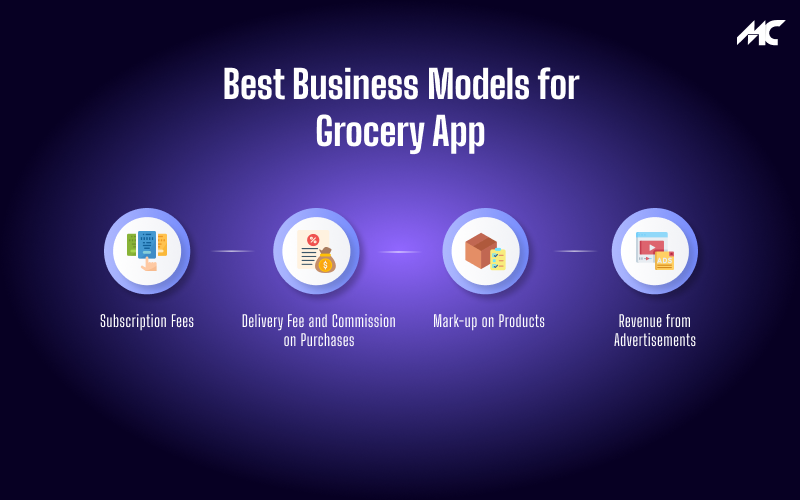
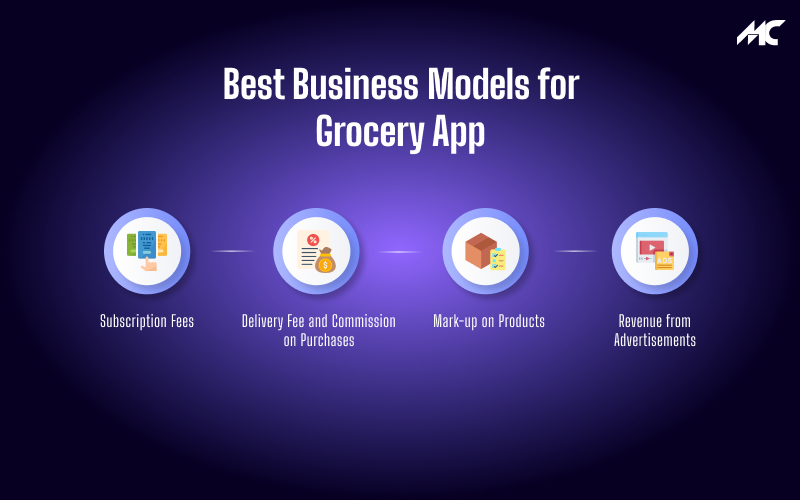
1. Subscription Fees
It is the most popular business model you can implement in your grocery app development process. Subscription fees allow regular customers to save money on the delivery of their groceries. Accordingly, the subscription model could cost around $100 a year or $10 per month. Regular users would be more likely to take such subscriptions from your grocery delivery app to save money on delivery charges. Lastly, you can ask your grocery app development company to implement this business model into the final product.
2. Delivery Fee and Commission on Purchases
This business model is ideal for charging customers who are not regular on your grocery delivery app. They are less likely to pay for the subscription; thus, you can charge commissions from them for each order. The commission amount could depend on various factors such as time, location, and order size. For instance, Instacart charges around 5% for its orders and around $4 to $8 for delivery. Lastly, you can also implement this business model while taking an on-demand app development guide.
3. Mark-up on Products
Many grocery delivery apps set product prices higher than stores to obtain delivery expenses. Even the slightest difference in the product price can help in generating revenue significantly. Instacart claims that the prices on their platform are defined by the retailers and do not differ from the store prices. Ultimately, the platform receives a portion of the partner’s profits by selling products.
4. Revenue from Advertisements
Suppose you don’t want to use a subscription business model or charge commissions on deliveries but still need to make your grocery business profitable. In that case, you can generate revenue from sponsors and ads. Above all, these sponsors could be anyone promoting products and services.
Key Features to Include in Grocery App Development
The functionality of a grocery app depends on various factors such as business model, MVP, unique-selling proposition, etc.
Moreover, these are some of the must-have features that you should include in an on-demand grocery delivery app;
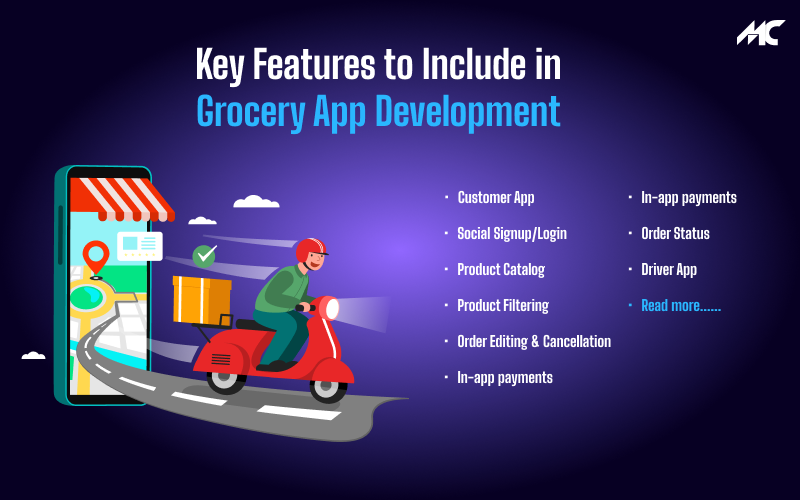
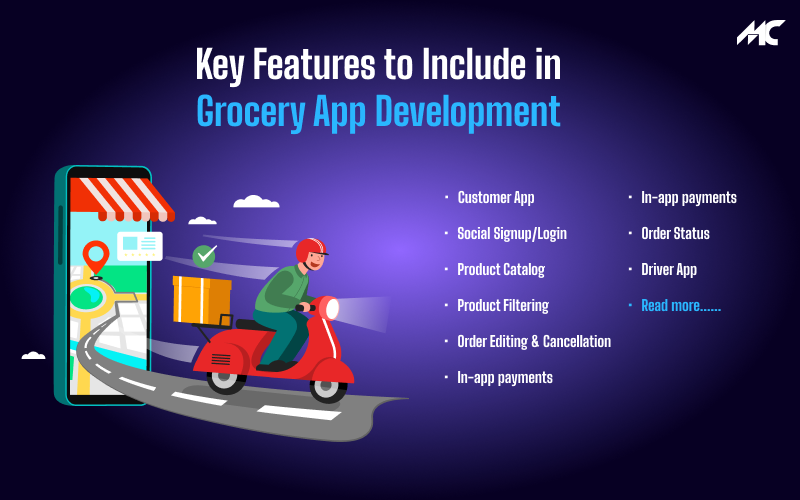
1. Customer App
The customer app will be at the forefront of your grocery business. Thus, it should allow them to browse products, place orders, make payments from different channels, and get the delivery of orders. Lastly, you must include the following features during the on-demand grocery app development process;
2. Social Signup/Login
It would allow the customers to instantly signup or log in using their existing social media accounts. Furthermore, you can also enable the users to create their accounts with their mobile numbers or email address.
3. User Profile
This section would enable the customers to add or manage their personal information.
4. Product Catalog
It would consist of a list of all products in a systematic format. Furthermore, they separate them into different categories.
5. Product Filtering
This functionality would enable the shoppers to sort products according to various parameters. Thus, it would help the users to browse products quickly.
6. Order Editing & Cancellation
The users should be able to edit or cancel the orders that they are placing. Accordingly, customers could smartly manage the orders while placing orders.
7. Add to cart
Users should be able to add products they want to buy to a cart.
8. In-app payments
Customers should have the option to make payments from multiple sources. Thus, they would have more payment convenience.
9. Order History
It will provide a complete list of past orders and deliveries made to the customer.
10. Order Status
This feature informs the exact location and status of each order.
11. Notifications
It would send notifications about each status update about orders, payments, deals, offers, etc.
12. Driver App
The delivery app might have completely different features than the user app. These features depend on the business model of the grocery app. Thus, consider adding these features to the driver app by requesting your grocery app development company;
13. Profile
After signing up for the app, the drivers must be able to add and manage information on the app.
14. Availability
The drivers should be able to define their availability and status as offline or online for deliveries.
15. Order Management
This panel would allow the drivers to either accept or reject the orders.
16. Delivery Information
Drivers can check every information about the orders such as their delivery locations, phone numbers of customers, delivery timings, etc.
17. Payments History
The drivers must be able to track and manage customers’ payment information from the app. Additionally, they don’t have to manage the payment history manually.
18. In-App Navigation
During grocery app development, you can include an in-app navigation system to help drivers to navigate to make deliveries without leaving the app.
Step-by-Step On-Demand Grocery Delivery App Development
Quality grocery apps will require you to hire a trustworthy grocery app development company. In fact, multiple professionals will work together to meet your business requirements and create a final product. Thus, we will explore the step-by-step process of developing an on-demand grocery delivery app.
1. Discover the Market and Define the Niche
It is the first step, you need to research the market, identify your target audience, and understand your competitors to find your strength and niche. Accordingly, this data from the market will help you define the on-demand grocery delivery app development process.
2. Define Your Unique Value Proposition
How to develop an on-demand grocery delivery app like Instacart? You need to find a unique value proposition in your app that sets you apart from the competitors. For this reason, you must understand users’ pain points to march in the right direction.
Instead of cloning existing solutions from the market, try to find a gap in the market that you can fill with unique features or solutions.
3. Find the Right Grocery App Development Company
Developing a grocery delivery app on your own might be challenging in the age of stiff competition. Above all, hiring a mobile app development company is the right choice when you want to achieve quality, scalability, and specialization.
You must consider portfolio, specialization, location, and hourly rates to order the right developers, designers, and project managers. Moreover, it would help if you looked for the following points;
- Years of experience in the market
- Diversity of their portfolio
- Skills and expertise of developers
- Reviews and testimonials from past clients
4. UI & UX Design for on-demand grocery delivery app
In this stage of on-demand grocery delivery app development, the designers would be working to create the visual layout of the application. Moreover, they will define the UI/UX of the app by creating wireframes and prototypes of each screen.
5. Mobile App Development Process
It is the critical stage; the developers are responsible for turning the mock-ups into fully functional applications with your business model. However, they will first develop an MVP with minimum features to give you an idea of the final product. Above all, the grocery app developer will use multiple tools and technology stacks to deliver your mobile application.
6. Testing and Improvement
The development process is incomplete even after the design and development process. You need to work on refinement and testing to eliminate any potential bugs, security, or performance issues. Above all, the QA team of will be responsible for creating multiple test cases to polish the final product.
Time and Cost to Develop On-Demand Grocery Delivery App
The cost and time to develop an on-demand grocery delivery app depend on various factors. However, it takes around $100,000 for both platforms (iOS and Android) to create a grocery app. Accordingly, the following factors together might determine the grocery app development cost;
- The number of features
- The region where you are developing your app
- The size and expertise of the development team
- The choice of platform and technology
This table will give you a better idea about the time and cost necessary to develop the grocery app;
| Development Stage | Hours Required | Cost in USA |
| Project management | 160-200 | $7,200–9,000 |
| Discovery and idea validation | 120+ | $5,400 or more |
| UI/UX design for different platforms | 130-190 | $5,850- 8,550 |
| iOS development | 600-800 | $27,720-36,000 |
| Android development | 616-800 | $27,720-36,000 |
| Backend development | 480+ | $21,600 or more |
| Admin Panel Development | 80+ | $3,600 or more |
| Testing and improving | 180 | $8,100 |
| Total | 2,366 – 2,850 | $106,470 – $128,250 |
Conclusion
As you have seen, the demand for on-demand applications has increased drastically. Popular grocery delivery applications will continue to grow in the digital age. Therefore, you can also capitalize on the rising market with the help of a trustworthy grocery app development company. MobileCoderz is a leading digital transformation company that can help you to realize your business model and develop a world-class grocery delivery application.
If you also aspire to build your own on-demand grocery delivery app like Instacart,
Schedule a call and discuss your project now
-

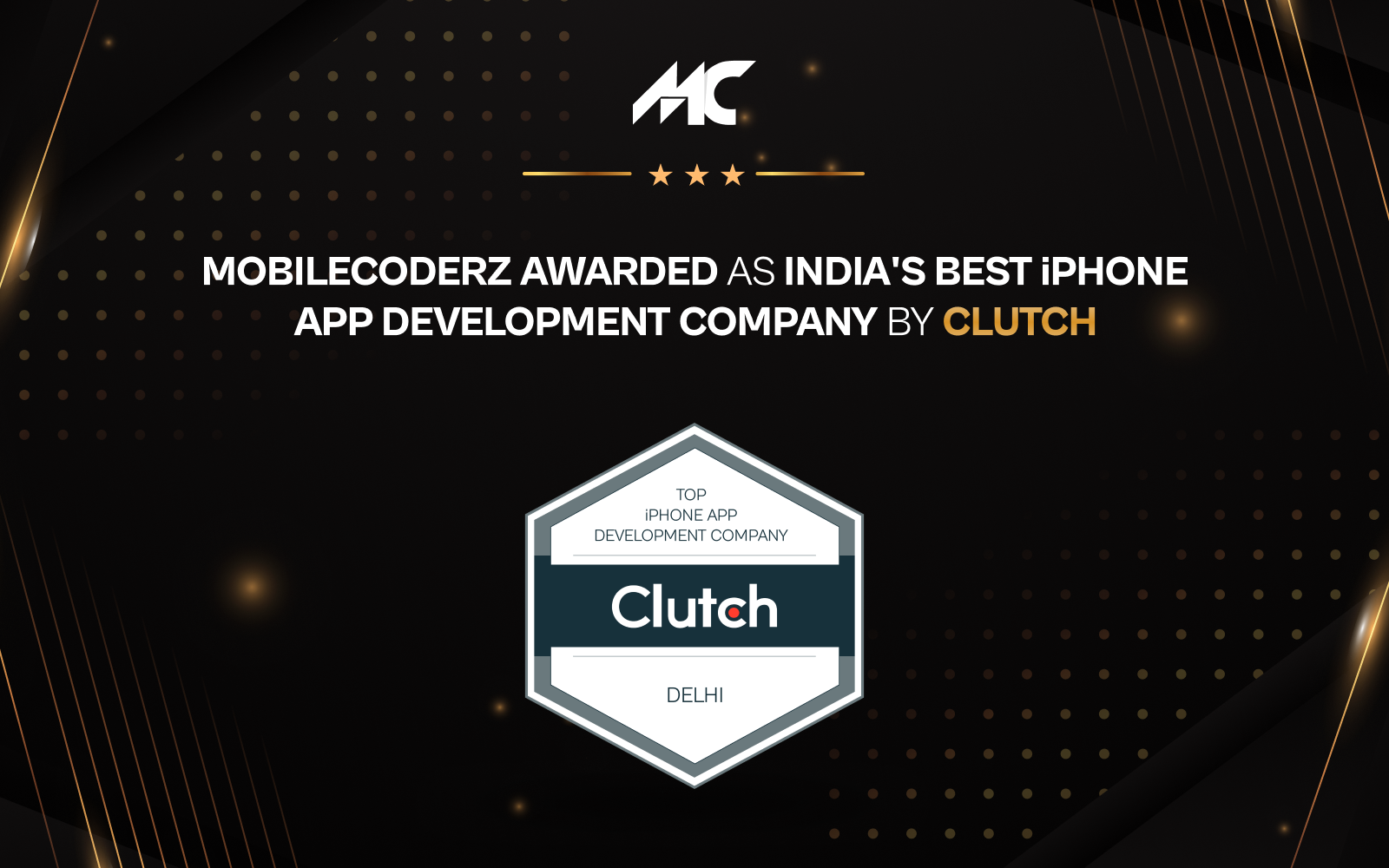 Mobilecoderz Awarded as India’s Best iPhone App Development Company by Clutch
Mobilecoderz Awarded as India’s Best iPhone App Development Company by Clutch -

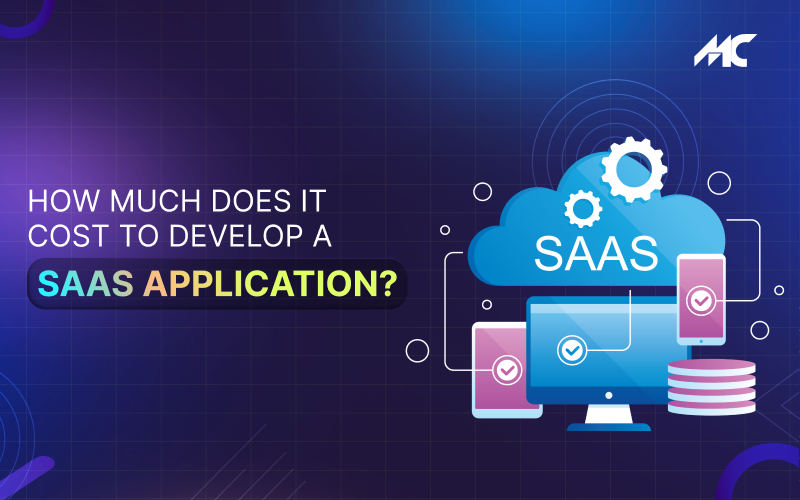 How Much Does It Cost to Develop a SaaS Application?
How Much Does It Cost to Develop a SaaS Application? -

 Mobilecoderz recognized as the Top App Development Company in Saudi Arabia by GoodFirms
Mobilecoderz recognized as the Top App Development Company in Saudi Arabia by GoodFirms





